My work includes large-scale gelatin-silver prints and archival pigment prints. For fifteen years I made still-life images of specimens collected and preserved for scientific study. Since 2008 I have worked with poets to incorporate text into images that are photo-based and incorporate drawing, painting, and software artifacts. Statements about the individual portfolios are below:
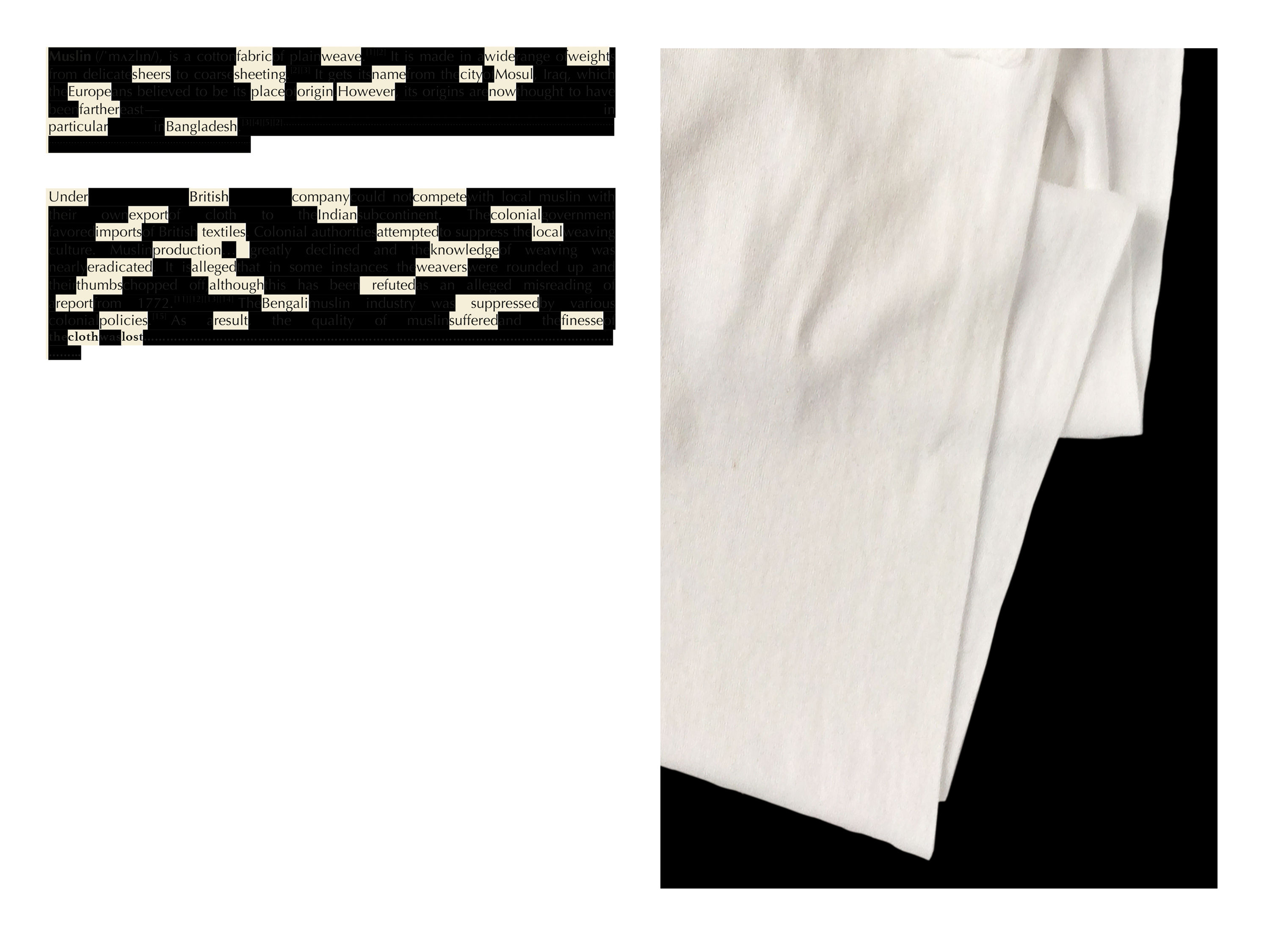
This series is a collaboration with poets Elisabeth Frost and Katherine Hazzard, and is based on objects in the collections of the San Juan Island Historical Museum and the Orcas Island Historical Museum.
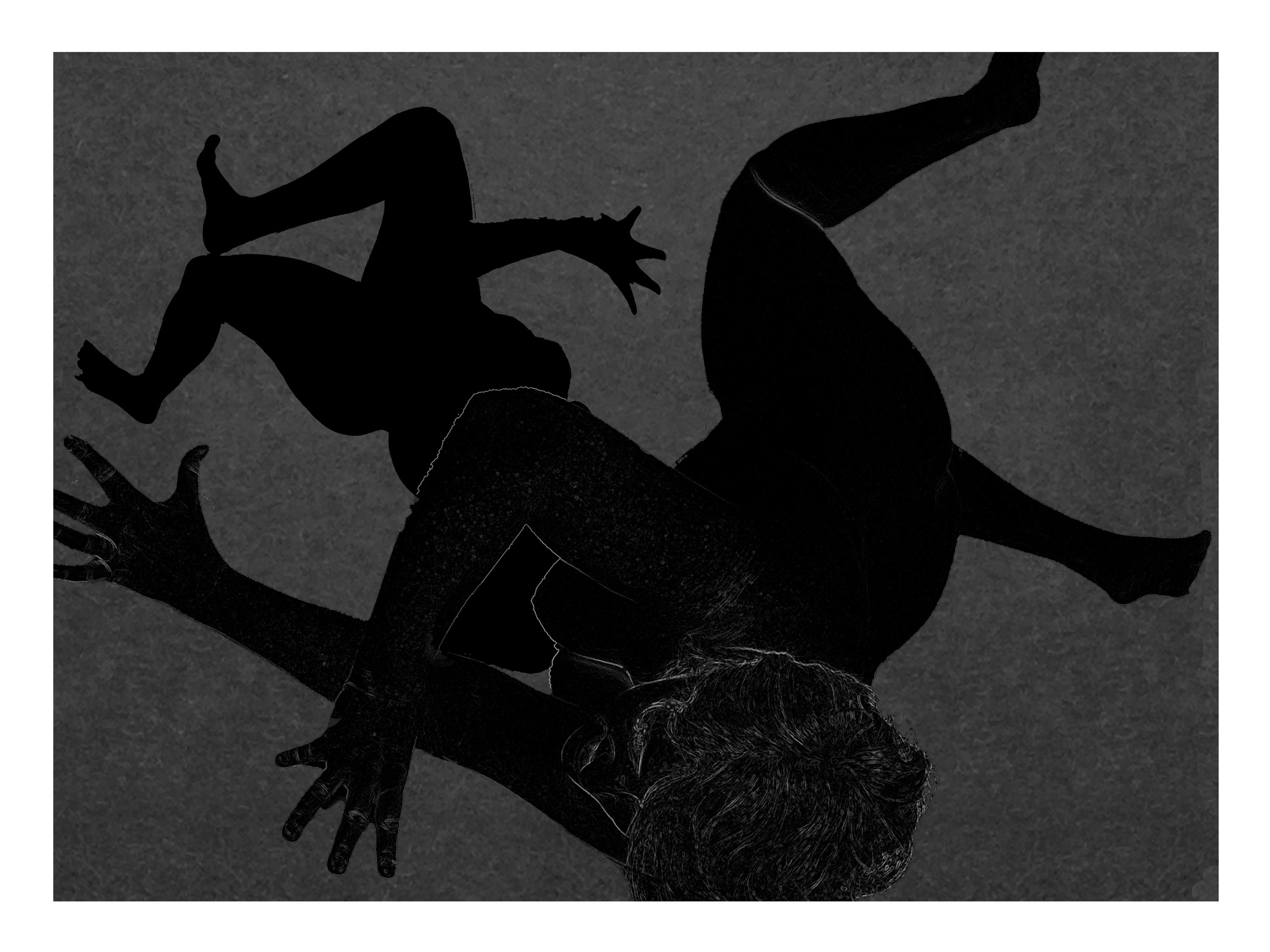
The titles of these pieces are drawn from the poem, "Gone." by Elisabeth Frost. We speak to the grief and loss we both experienced in the hospital deaths of our mothers.
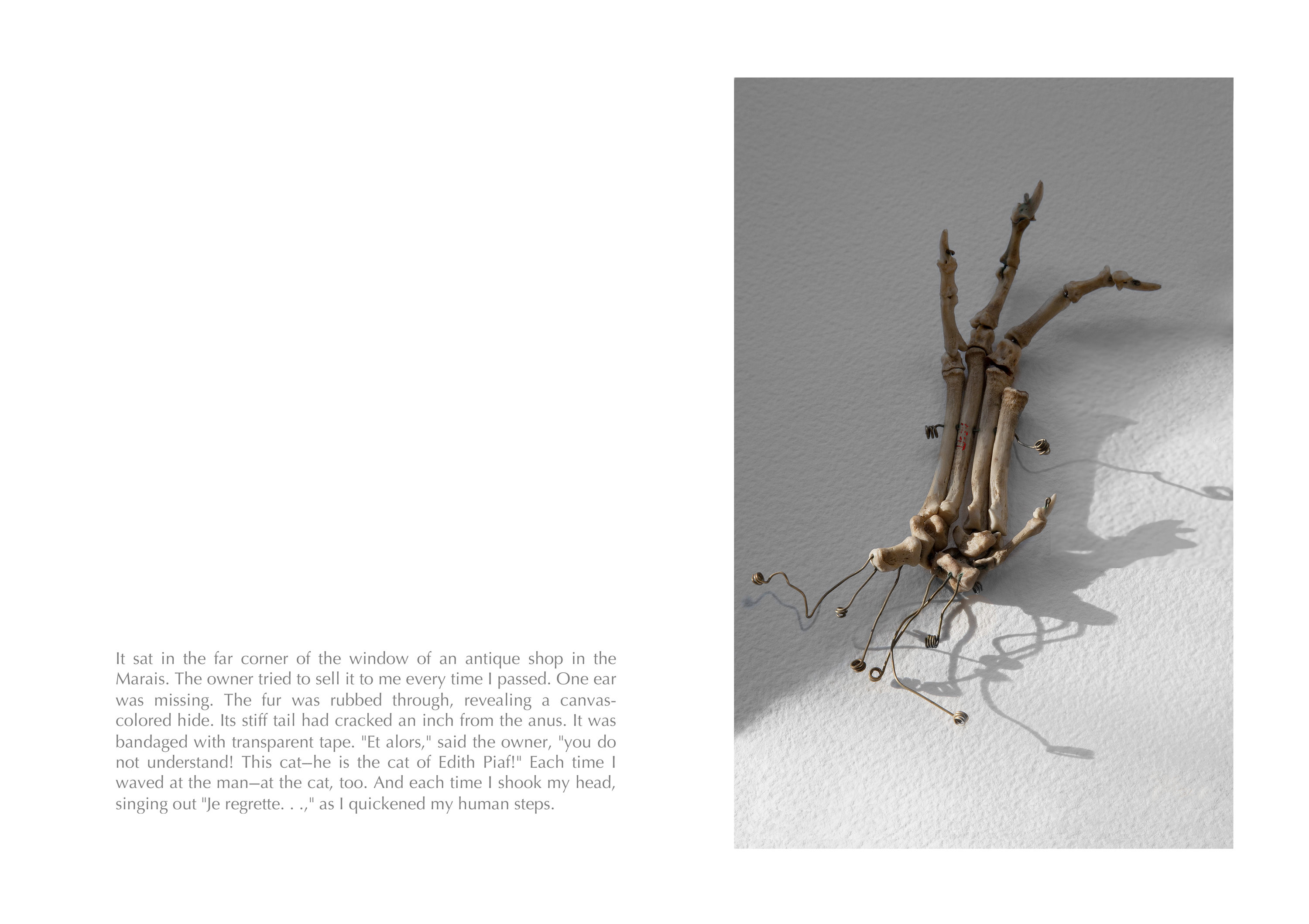
Remains
with poet Elisabeth Frost
The beginning of this collabrative project were apocalyptic prose poems that Elisabeth Frost had in her archive, and photographs of bones that I was making at the time.

Rose Was All There Was
with poet Elisabeth Frost
What do we see when we look—when we stare? As we stare, how do we know what it is we’re really seeing? The questions behind Rose Was All There Was concern visual perception and knowledge—especially the evidentiary knowledge the scientific method produces.
Specifically, the mechanics of examining marine specimens under the microscope led us from a positivist view of specimens as scientific evidence to a very different appreciation of the visual phenomena we experienced in looking. We were taken instead with the beautiful effects of time and color on these microscope slides: that is, the aging and cracked glass, the apparent decay of the medium used to preserve the specimens, and the accidents of line and color that result.
We deliberately leave behind the original purpose of these artifacts—that of scientific study—along with their identifying marks, to ask how we experience something as fundamental as light, as transformative as color, as fragile as glass. In meditating on the luminous images in Rose Was All There Was, Elisabeth embraced the notion of the circle and its color fields to write about vision itself.
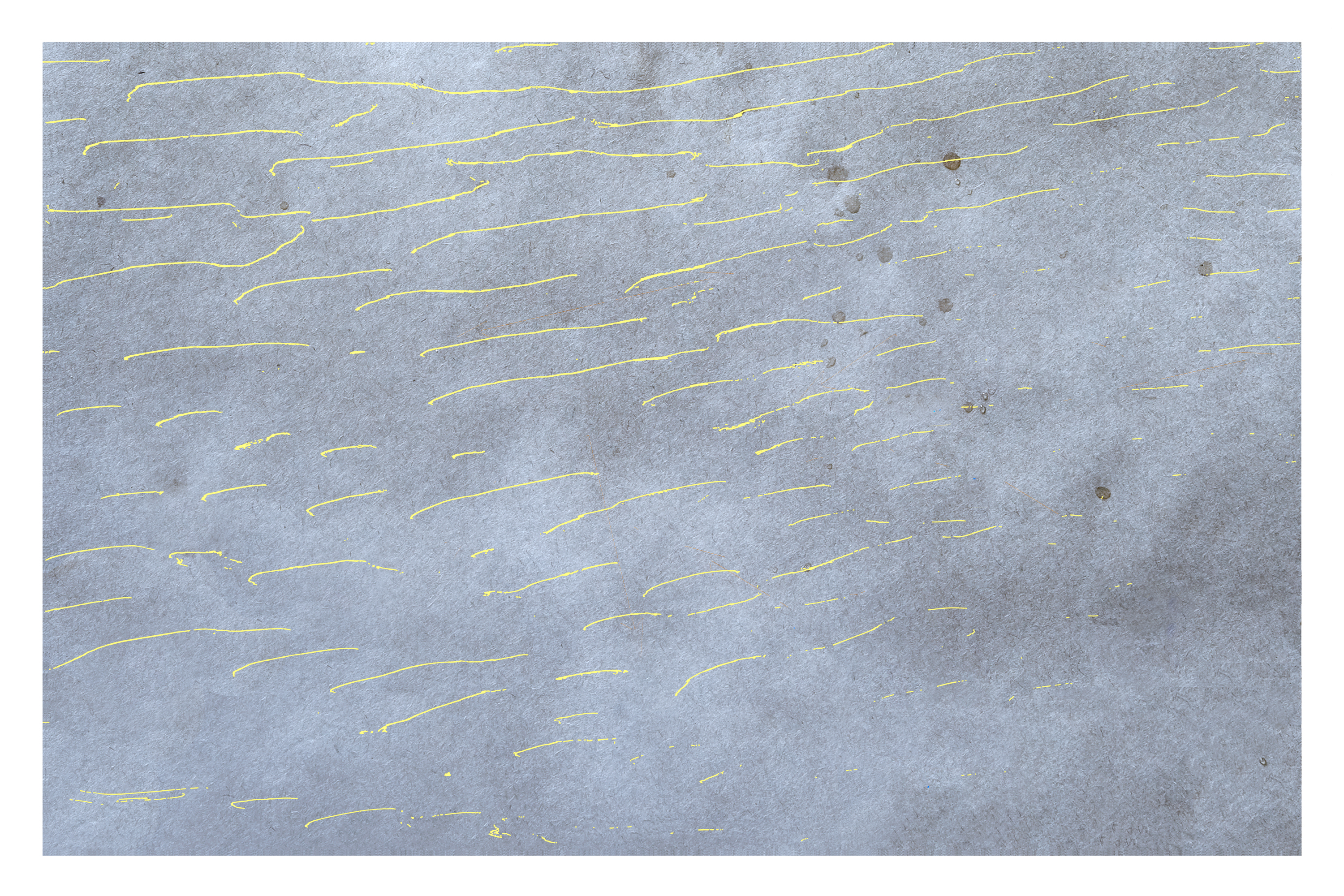
Echo
with poet Elisabeth Frost
The titles of these abstractions of the surface of water are drawn from the poem, "Echo," by Elisabeth Frost.
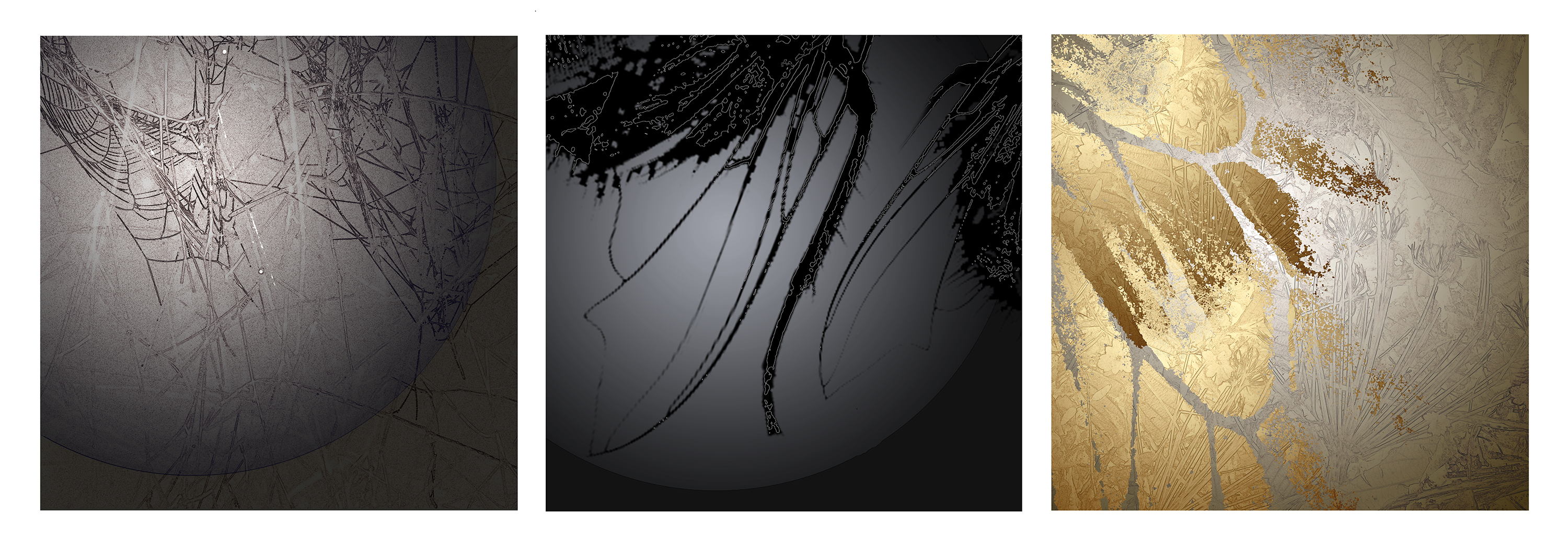
The Spider and the Flies
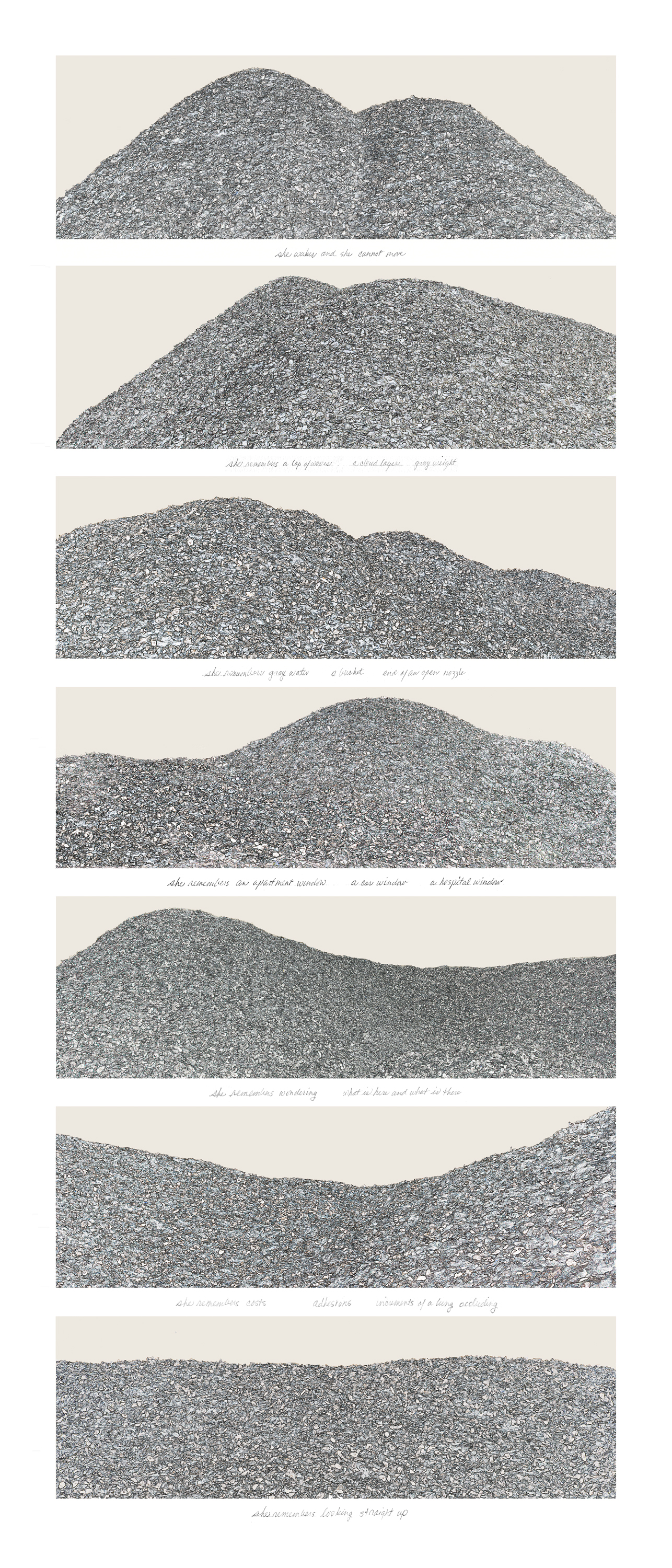
What is Left
with poet Elisabeth Frost
What is Left moves between the abstract and the concrete, in both image and text, to explore the charged and disorienting experience of grief. Each panel displays a massive pile of discarded oyster shells, which I photographed while Elisabeth and I shared an artist’s residency at the Willapa Bay AiR in Oysterville, Washington. Abstracted into pure line, these mounds of mortal remains become desiccated, lifeless landscapes that bear down on the text, excerpts from Elisabeth’s poem “Gone,” a meditation on dying and grief.
The text reads:
she wakes and she cannot move
she remembers a lap of waves a cloud layer gray weight
she remembers gray water a bucket end of an open nozzle
she remembers an apartment window a car window a hospital window
she remembers wondering what is here and what is there
she remembers costs, adhesions, increments of a lung occluding
she remembers looking straight up
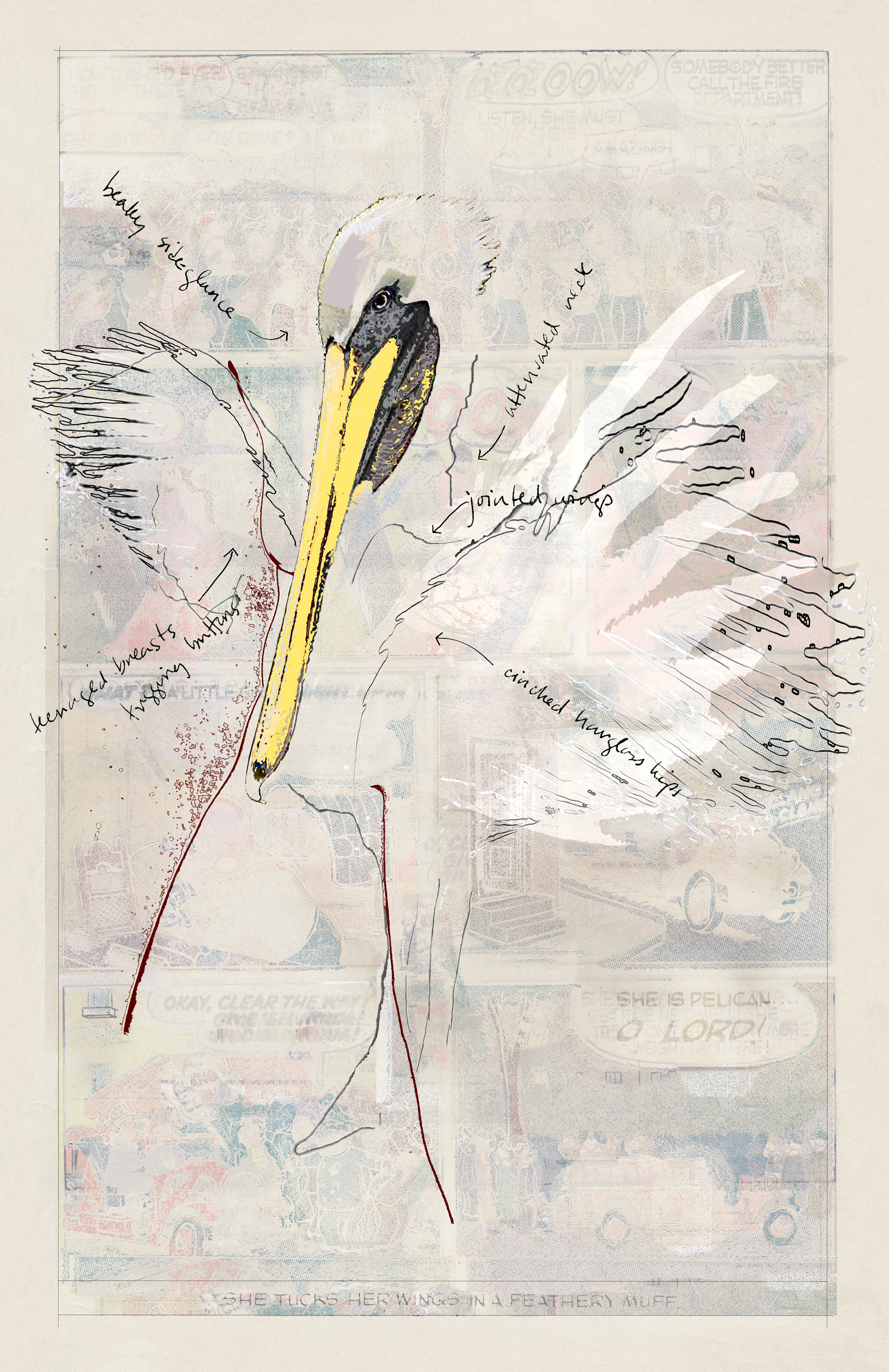
Madonna Comix
with poet Celia Bland
Madonna Comix is based on eleven poems about a metaphoric Madonna. The poems speak to the multiple experiences of being a woman, especially the profound physical and emotional ones of childbearing and child rearing. Our fears, the life-choices we make, the things we take on faith are addressed. In deciding on an approach to the poems, I kept in mind both the reverent, secular, and (to use Celia’s term) “smart-alecky” nature of the text.
I grew up with “Little Lulu” comic books—a proto-feminist voice in the 1950’s. For this project I photographed and altered “Little Lulu” comic book pages to use as visual grounds for the pieces. Importantly, these also provided me with a way to introduce a second, down-to-earth voice in response to Celia’s lyric one, by incorporating text from the comic book page. The Christian Madonna is the source of a rich iconography that I reference in the images. Although the work is no longer recognizable as photography (my working process here is much like that of painting), photographically derived imagery is central. The figures are based on my negative archive. I made additional photographs to use as needed.
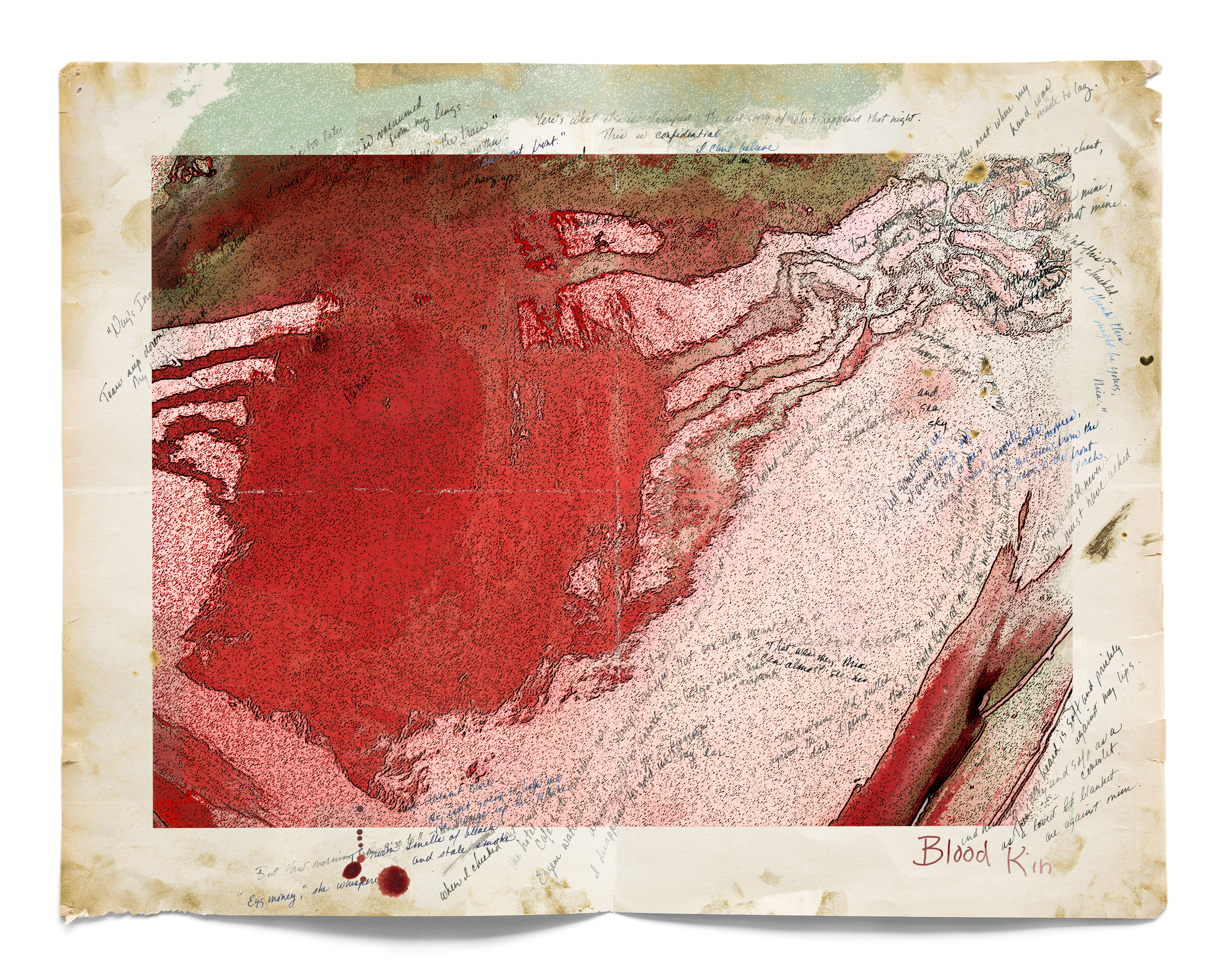
Riding the Crescent
with poet Celia Bland
This project began with photographs I made of the blood from a slaughtered sheep that was collecting and coagulating in a tub. I emailed them to Celia and she responded with a story in which race, class and familial relations ride the Carolina Crescent on contours of blood. As Celia states, "Blood is Time bears the distressed text of a young woman’s misadventures as she misses a train; Blood Kin, a climactic moment in a Day’s Inn; and Passing Strange, riding the rails as she attempts to escape a past, pulsing like blood. The scrawled lines of text mimic the vehicles of the girl’s travels -- corvette, taxi and train – veering along the byways of blood and race and sex. As one reads the fragmented phrases overlaying the bloodscape, one might imagine much-read maps of intersecting routes. Blood remembrance underlies this collaboration of text and image. Blood, as the saying goes, always tells."
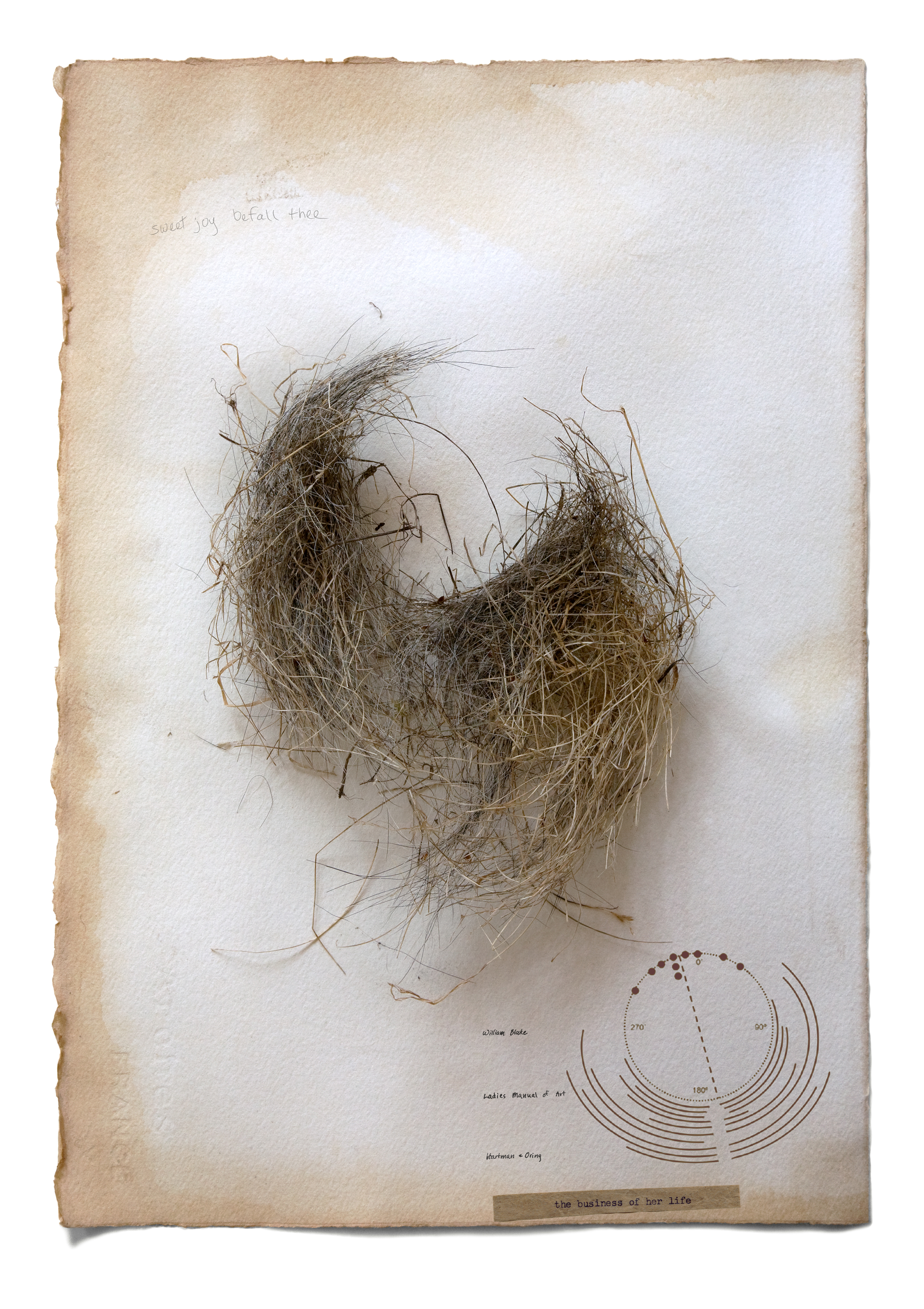
The Lore Which Nature Brings
with poet Elisabeth Frost
In The Lore Which Nature Brings, we explore the imagery of birds' nests to contrast two tropes: specimen collection (the nests as objects--"Caliology" being the study of birds' nests) and the history of highly subjective poetry about birds and nesting. In this visual fiction, specimen pages harbor the collected object, which interacts with an over-determined poetic text. We wanted to debunk cliches about nesting, from maternal instinct, to the trope of “joyful” birdsong. Mining Romantic poetry (Blake, Wordsworth, Shelley), Elisabeth’s text is mainly found language, a radical “pruning” of famous poems about birds, birdsong, and birth. Our title comes from Wordsworth’s “The Tables Turned,” which avers, “Sweet is the lore which Nature brings,” and decries the “meddling intellect” (“we murder to dissect,” he states). Wordsworth embraces direct emotional experience—and yet paradoxically writes a poem about it. That paradoxical artistic act is an analog for our project.
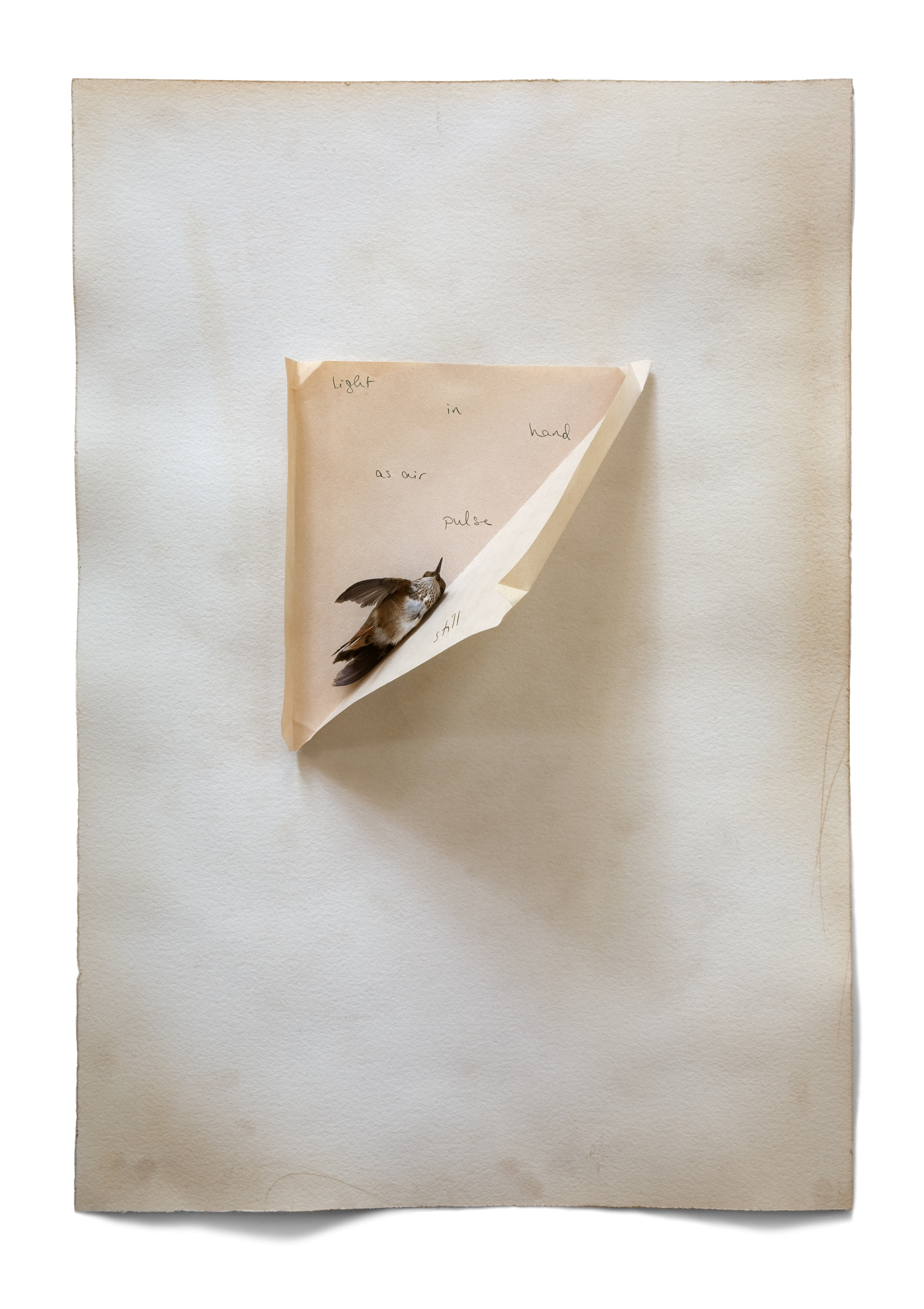
Bindle
with poet Elisabeth Frost
The structure of this piece about dying is based on India Tigers.
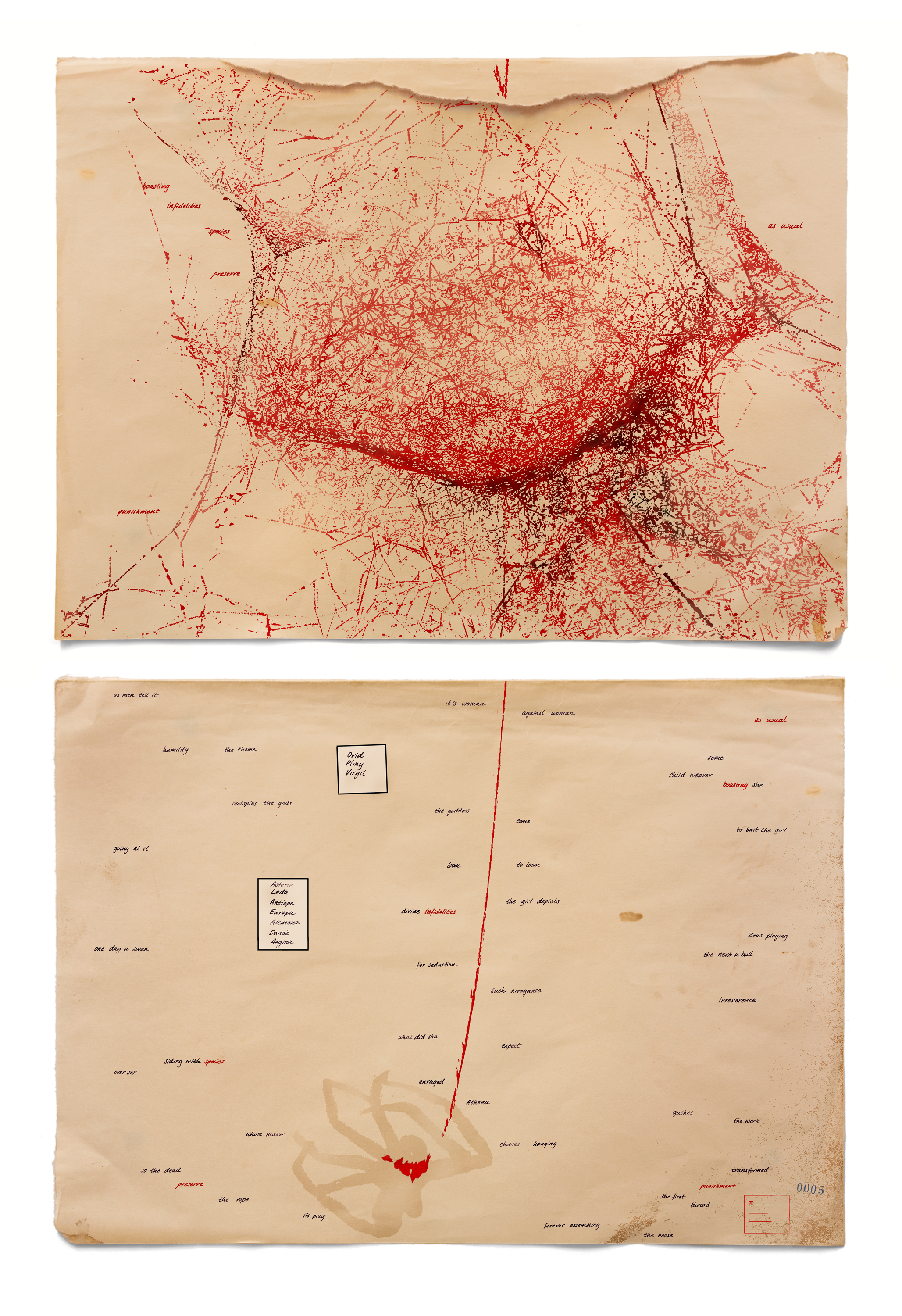
Arachne
with poet Elisabeth Frost
In our first collaboration for "The Poetic Dialogue Project," we alluded to the conventions of specimen collection and preservation for scientific study that have occupied me for many years, and to Elisabeth's interest in importing specialized language into lyric poetry. We hoped to bridge scientific and lyric ways of knowing. The photographed sheets of paper (front and back in each diptych) ‘impersonate’ the specimen paper used in herbariums, with stains and imperfections. For the imagery I used photographs of spider webs, scanned drawings, penciled notations, red-bordered labels, and inked text. Elisabeth used Latin terminology to reference descriptive taxonomy, including genus, species, and measurements.
Arachne explores text and image as integral to one another. Handwriting appears as scientific notation and poetic phrase, just as the web is both a visual and a glyphic trace. Silk thread appears in the ‘ballooning’ that launches spiderlings into new habitats [0001], in the web’s role in capturing prey [0003], and in doubling as food [0004]. Finally, we retell the myth of Arachne (in 0005), whose acts of creation our work also honors.
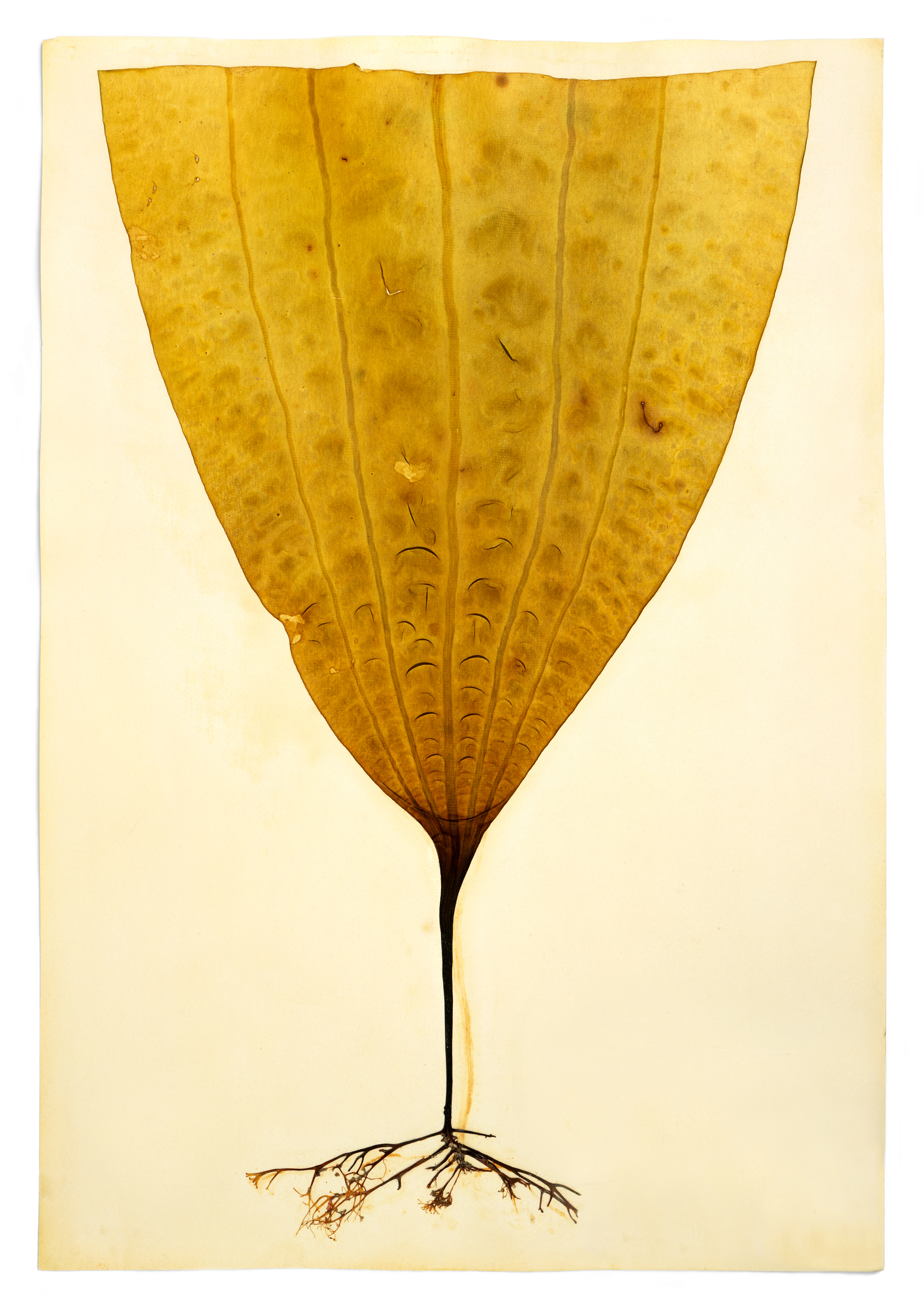
The Marine Algae Project: Celebration, Evidence of its Occurrence, and Cors Mortale
The Marine Algae Project includes Celebration, and Evidence of Its Occurrence. In the spring of 2003 I spent a month at the Whiteley Center residence at the University of Washington's Friday Harbor Laboratories on San Juan Island. In particular, I went there to photograph in the marine algae herbarium. In pigment prints, the physicality of the ink on paper closely mimics the pressed algae specimens, and the prints take on attributes of graphic media such as watercolor or pastel. The shapes of the seaweeds in Celebration suggest chalices raised in toast. Evidence of its Occurrence takes its name from text I found on a specimen card that carried just a stain of what had once been preserved. It refers to the value of collecting, preserving, and identifying as a basis for scientific knowledge and understanding. The words takes on elegiac resonance in this age of habitat depletion, species extinction, and a worming planet.
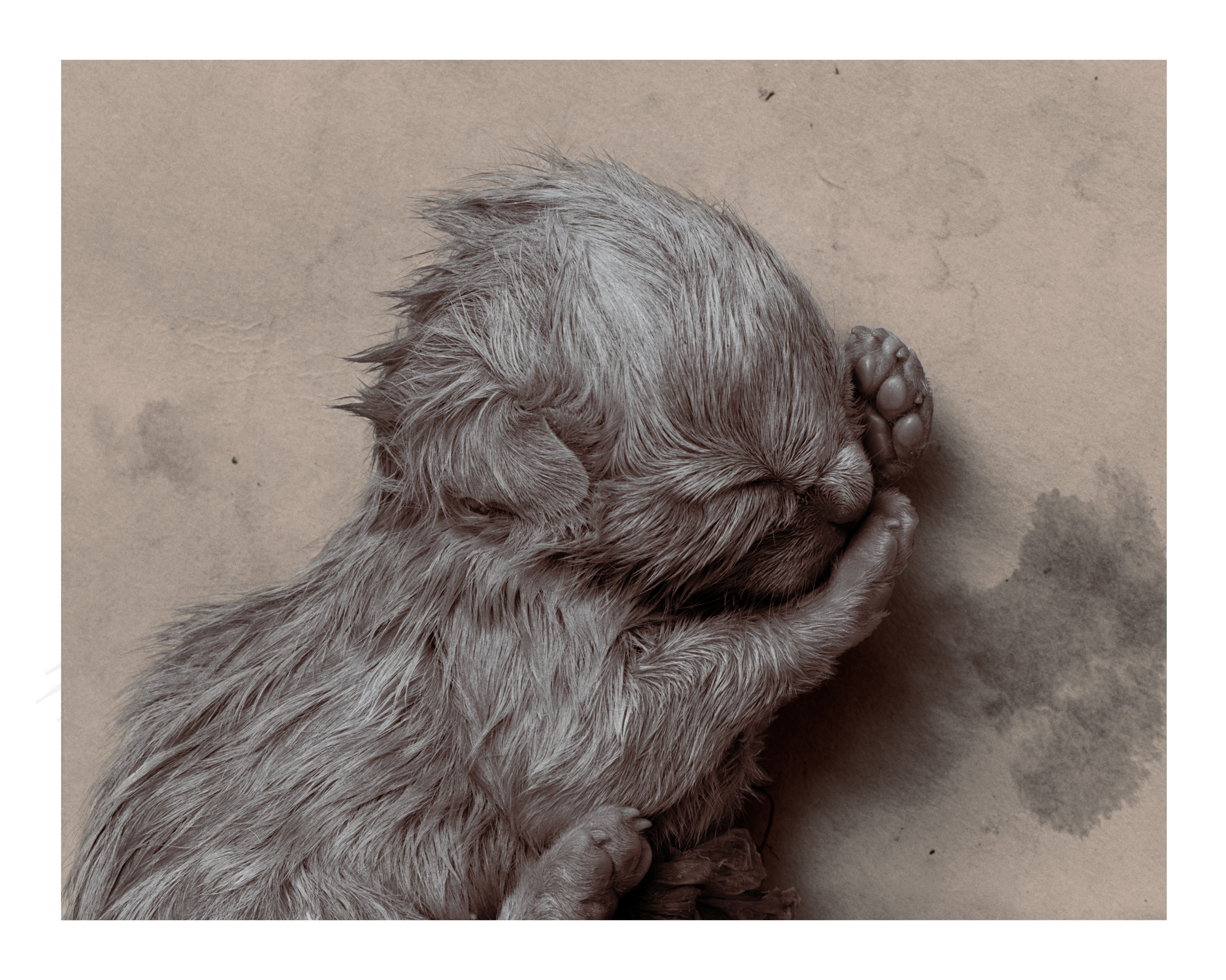
Inchoation
In this selection of small gelatin silver prints of animal fetal specimens from Portland State University and Lewis & Clark College I wanted to call attention to the evolutionary history and life force that we share with other living beings. The colors are achieved by selective masking in conjunction with various combinations of toners and stains.
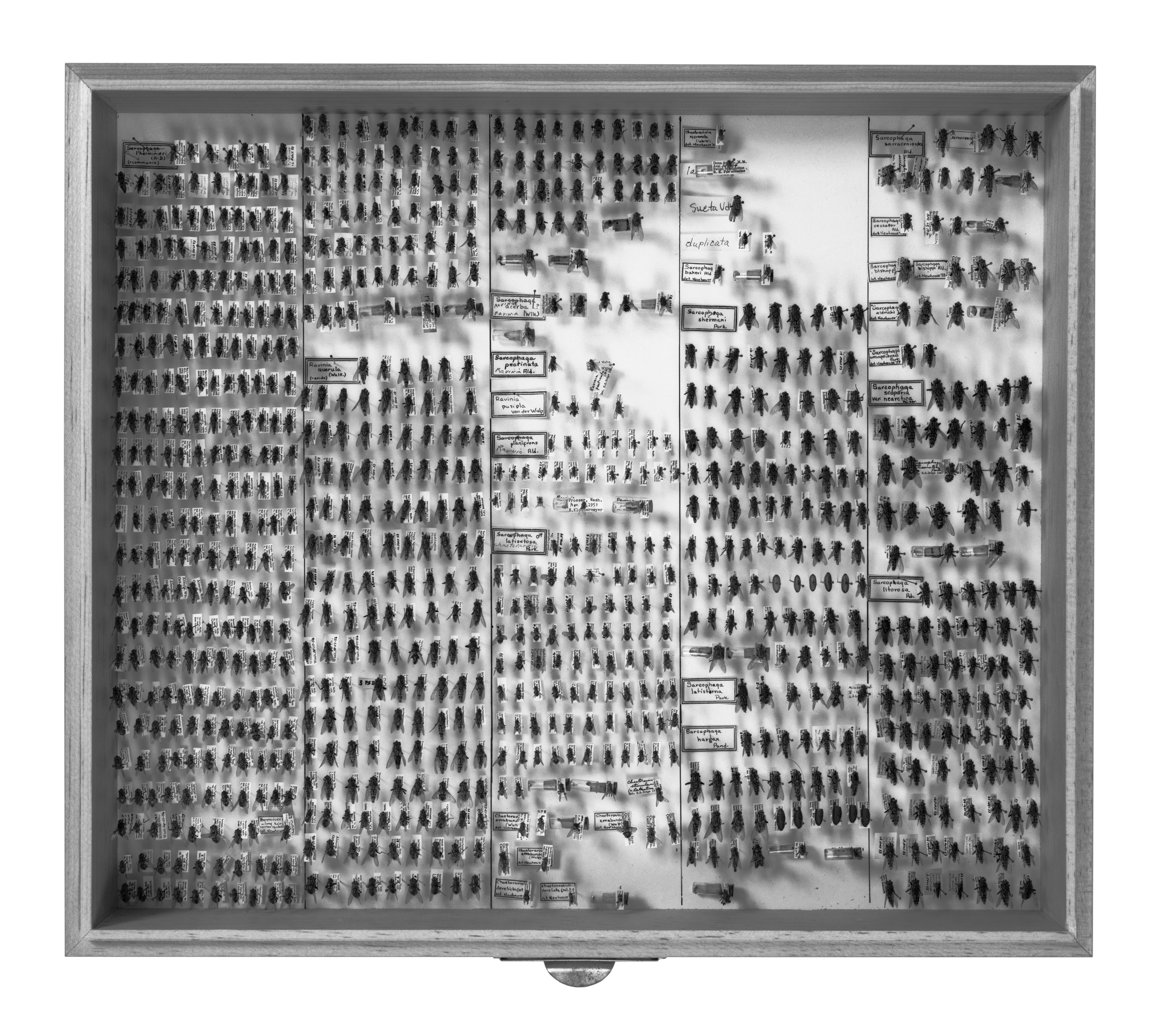
Insecta
These large prints are from a series of photographs I made of insect collections. Some are methodically arranged by scientists; others offer a random record of an amature collector's travels. For one of the photographs I placed a friend's treasured moth specimens in a standard collection box.

India Tigers
The twenty-four butterflies and moths from India were preserved in folded, triangular paper wrappings. I photographed them so that the wrappings appear to extend out from the picture plane, as might the wing of the insect. All of the images in the series rotate on an axis around a shared central point, and a delicate sense of movement is suggested as the direction of the light changes from one piece to the next.
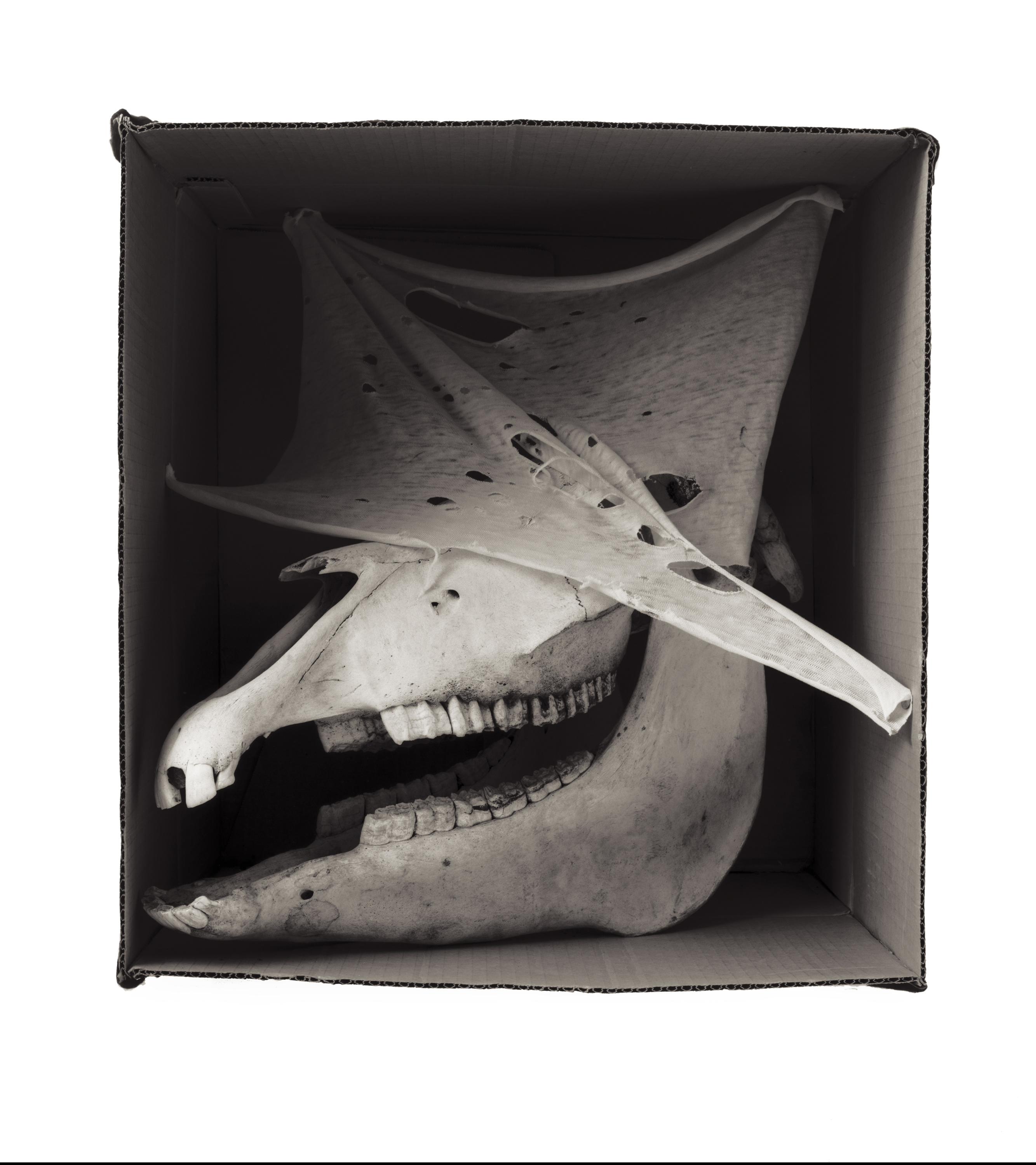
Jack-in-the-Box
The diagonal lighting in this selection from a series of eight images echoes the visual impression I had when I opened the door of a weathered shed in Canada's Northwest Territories and saw a shaft of sunlight transform the bleached skull of a horse. The title refers to the malevolent toy of that name which provokes multiple responses: surprise, fright, laughter. Although all the images are composed using the horse skull and a piece of cloth inside a corrugated box, each suggests a unique character--a jester, a swamp creature, and so on--some more ambiguous than others.

Cartwheel Suite
In Cartwheel Suite, a series of six 40" x 50" gelatin silver prints, I used the bones of a disarticulated calf. I stored the bones in a corrugated box that had contained large sheets of mat board. One evening, the light in my basement studio transformed the bones into a luminous figure, suggesting to me a "dance of death." I made alterations to the box and made several 8 x 10" photographs of arrangements of the bones until the "cartwheel" movement developed. The painted and delaminated box can be perceived in various ways (as stage curtains, coffin fabric, candy wrappers, and so on). Together, the six images depict an acrobatic sequence in which the expressions of the figures are joyous and have a spirit of high good humor. The juxtaposition of the cartwheel and the skeletal materials suggests the Epicurean injunction, carpe diem, "seize the day."

Comparative Anatomy
This selection, from the Comparative Anatomy series, seeks to re-create the experience of anticipation and revelation that I had when I first opened the boxes of specimens from Reed College. With the diptych form I was able to give equal weight to the covers of the boxes and their contents. The layers of text--labels and postmarks--on the candy, cigar, and scientific-supply storage containers provide historic and ironic contexts.
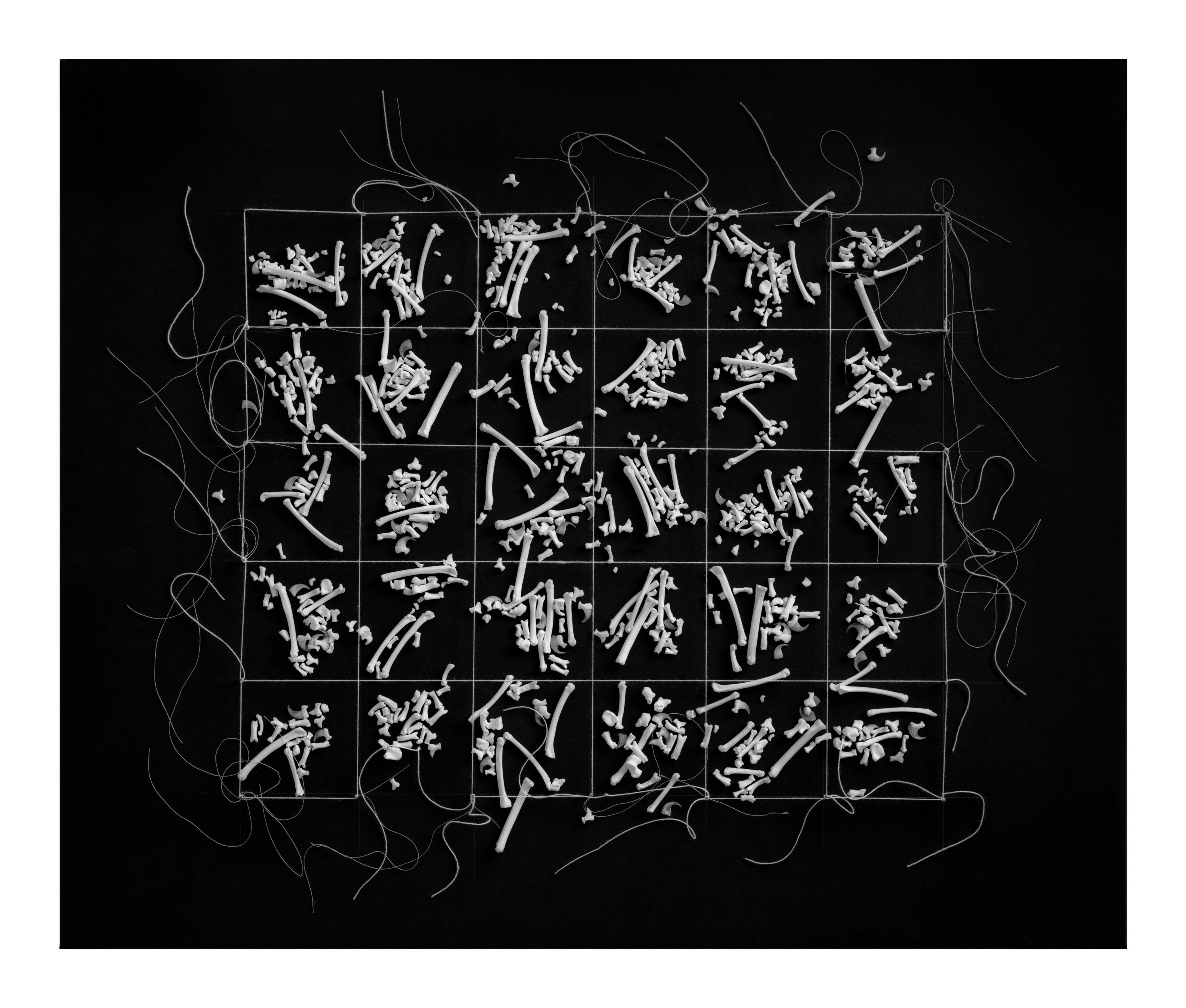
I made a sequence of sixteen grids with foot bones of cat skeletons. The changing arrangement of the bones from one grid to the next is reflected in the various grid structures, which are made with string, thread, and nails. The grids refers to navigation (finding one's way through the unknown), archaeology (discovering order in chaos), and text. There is movement--a building up, a breaking apart, a falling down--in the sequence.
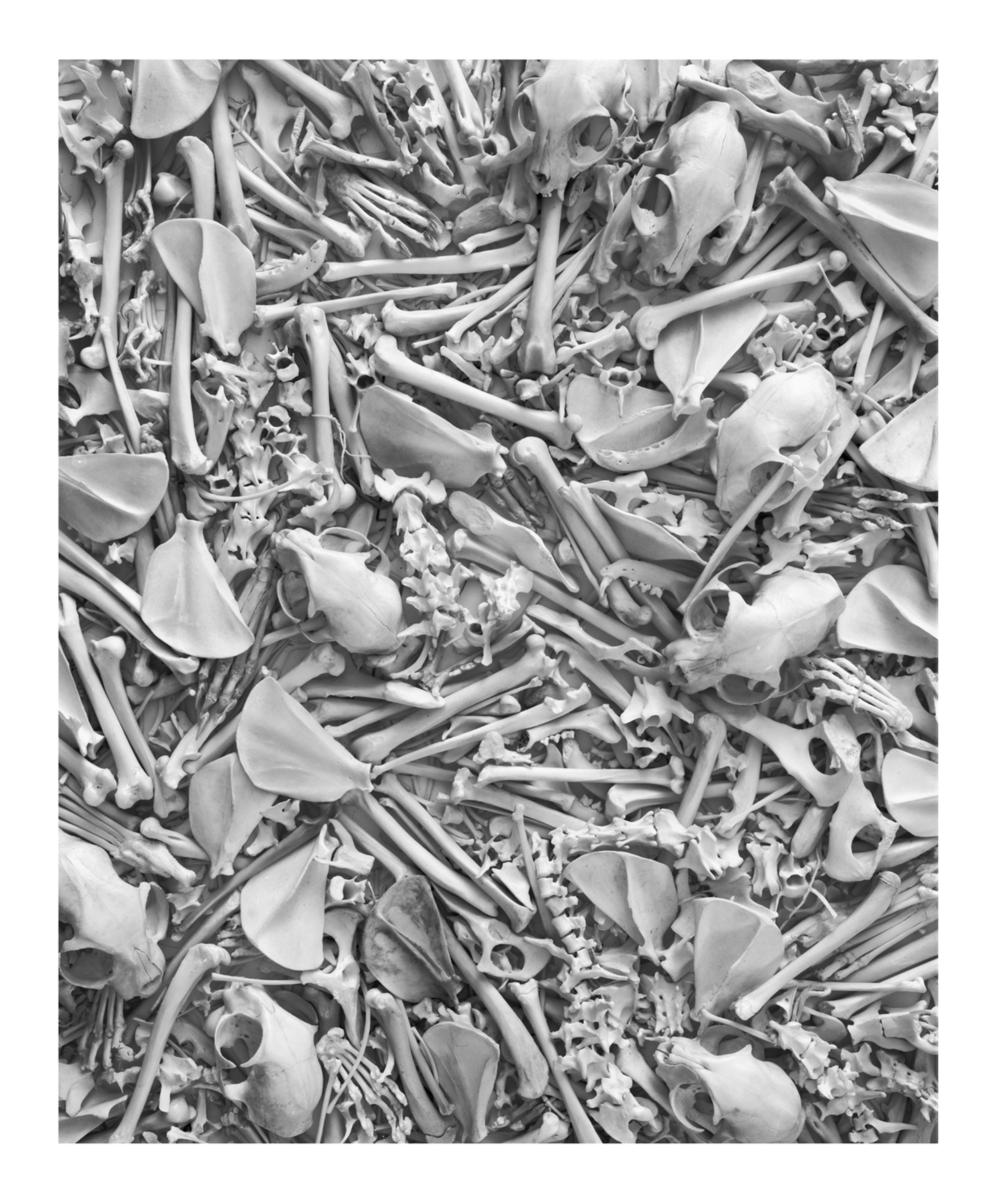
Bone Stories
Bone Stories is a loosely knit group of images that I made over a period of several years, using found bones as well as bones collected as study specimens. During a facility cleanup at Reed College in Portland, Oregon, bones from courses taught in the 1930's and 40's were discovered in a janitor's closet. Opening the dusty and often mislabeled boxes was a highly charged experience for me. Like small burials, these specimens seemed imbued with meaning. My encounter with this material began my work with scientific study collections.